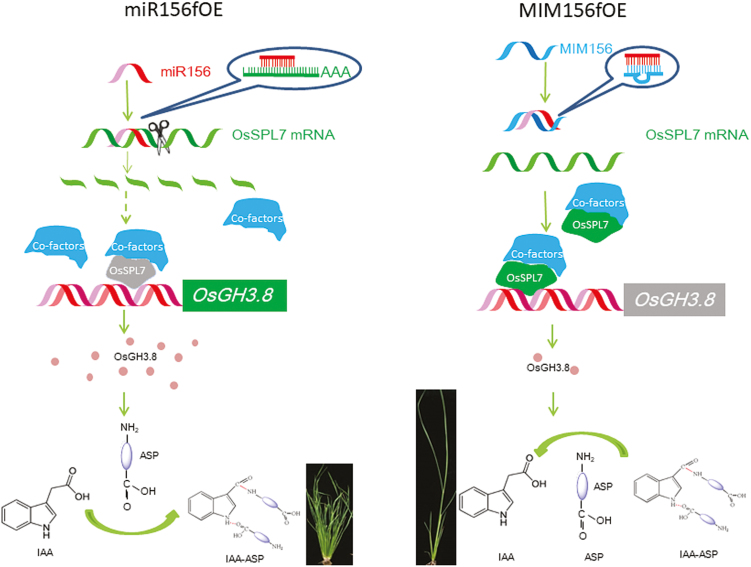Fig. 7.
Schematic of the proposed miR156–OsSPL7–OsGH3.8 pathway. In miR156fOE plants (left), excessive miR156 cleaves OsSPL7 transcripts and represses its expression. This releases OsSPL7 transcriptional control of OsGH3.8 expression. The plentiful OsGH3.8 facilitates the combination of IAA with aspartic acid (ASP), leading to cluster and dwarf plant phenotypes. In MIM156fOE plants, miR156f is sequestered by MIM156f, so that there is enough OsSPL7 available to suppress the expression of OsGH3.8. This then promotes the dissociation of ASP from IAA, leading to a phenotype of reduced tiller number and increased plant height.

